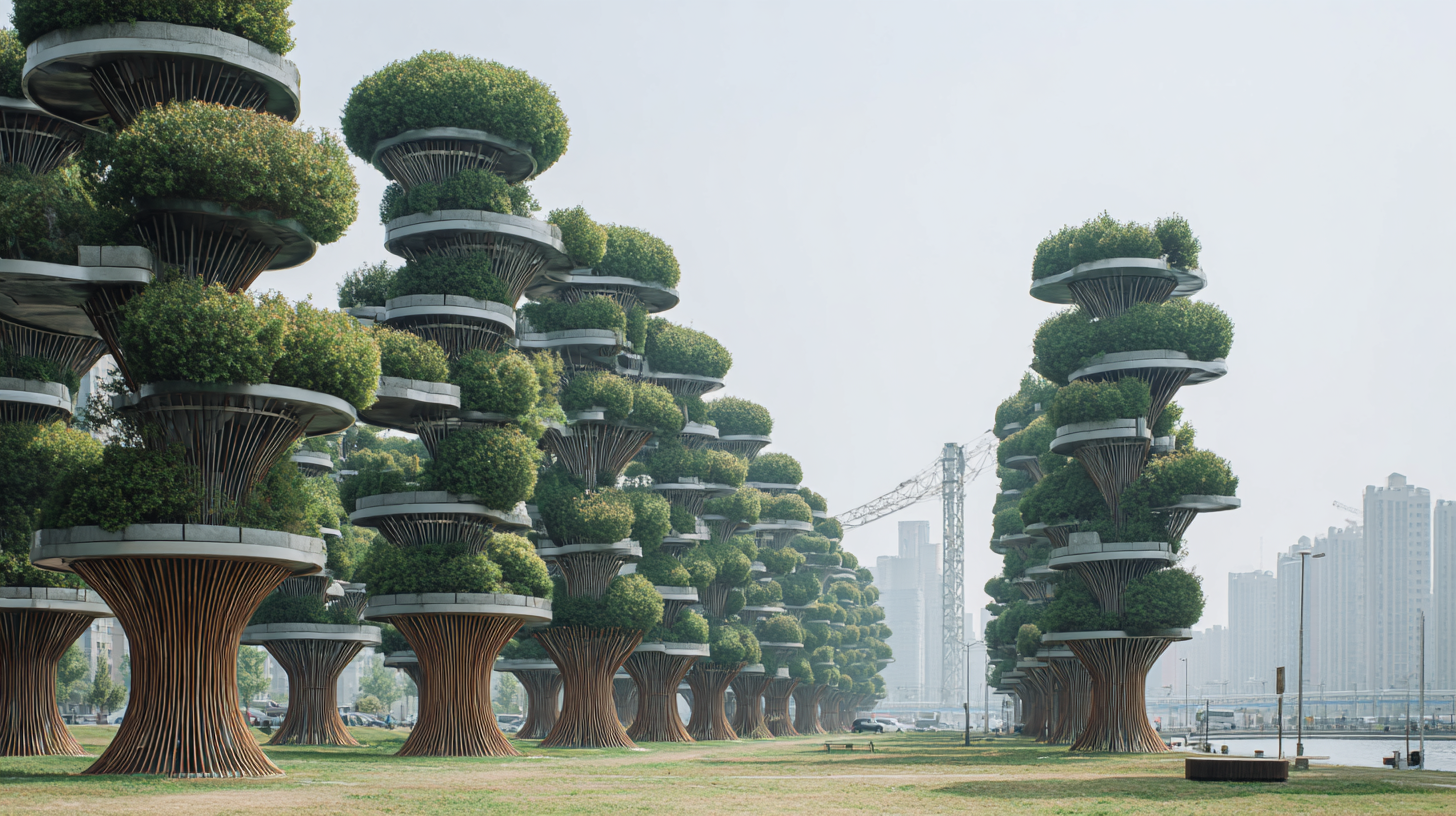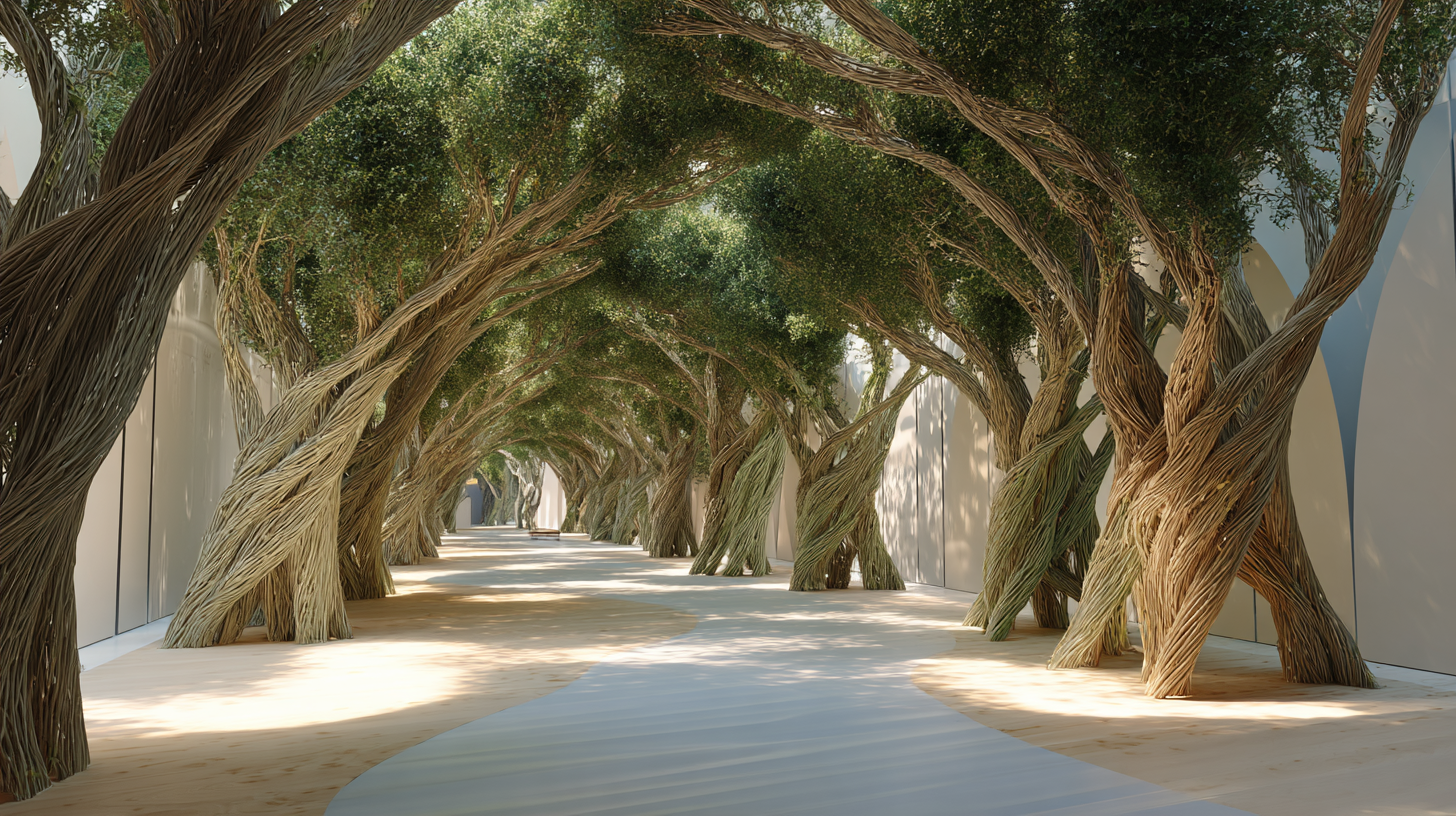The rapid urbanization of the 21st century has led to significant environmental challenges, with cities now home to over 55% of the global population. This increasing density has underscored the urgent need for sustainable city design, where the innovative concept of Artificial Trees emerges as a pivotal solution. According to a 2020 report by the World Economic Forum, urban greening initiatives can reduce city temperatures by up to 5°C, highlighting the essential role greenery plays in enhancing urban environments.

Artificial Trees, engineered to mimic the carbon-absorbing capabilities of natural trees, have the potential to improve air quality by capturing pollutants and producing oxygen. A study from the U.S. Environmental Protection Agency indicates that incorporating such technologies can enhance urban biodiversity and resilience against climate change. As cities strive for sustainability, the integration of Artificial Trees not only addresses ecological needs but also transforms urban landscapes into healthier, more livable spaces for future generations.
Urban greening has emerged as a pivotal strategy in sustainable city design, offering numerous ecological, social, and health benefits. Research conducted by the United Nations indicates that urban areas, which house over half of the world’s population, are responsible for about 70% of global carbon emissions. This sharp statistic underscores the critical need for initiatives that enhance urban environments, such as urban greening, which involves integrating natural elements into city landscapes. By increasing vegetation, cities can improve air quality, reduce heat island effects, and promote biodiversity, essential aspects for creating resilient urban ecosystems.
The importance of urban greening cannot be overstated. A study by the American Forests indicates that strategically placed trees can reduce urban temperatures by up to 5°F, thereby minimizing energy consumption for cooling. Additionally, green spaces contribute significantly to mental health, with research suggesting that access to nature can reduce stress and enhance well-being.
Innovative solutions like artificial trees, designed to mimic the functions of natural trees—such as carbon capture and particulate filtering—are becoming integral in the quest for greener cities. This emerging technology not only complements natural systems but also offers scalable solutions to meet the challenges posed by rapid urbanization and climate change.
Artificial trees are an innovative addition to sustainable city design, providing numerous functionalities and benefits that align with modern urban greening goals. Defined as structures that mimic the air filtration and carbon absorption capabilities of natural trees, these artificial counterparts offer advanced solutions to combat urban pollution. According to recent studies, such innovations can potentially reduce airborne particulate matter by up to 30%, significantly improving urban air quality. This becomes increasingly vital in densely populated areas where traditional greenery may not suffice due to space constraints.
Functionally, artificial trees are engineered to capture carbon dioxide while releasing oxygen, akin to their natural counterparts. However, they also incorporate technology that allows for monitoring and adapting to their environment. Moreover, these systems often prioritize energy efficiency by using renewable energy sources to power their operations. The benefits extend beyond aesthetic enhancement, as urban planners report that integrating artificial trees can lead to a 15% reduction in urban heat, contributing to more comfortable and livable city spaces. This synergy between technology and environmental awareness underscores the potential of artificial trees in redefining our approach to city planning and sustainability.

The advancement of innovative technologies has paved the way for the integration of artificial trees into urban greening efforts. These synthetic structures are designed not only to mimic the aesthetic appeal of natural trees but also to enhance environmental sustainability. By utilizing cutting-edge materials and design techniques, artificial trees can actively contribute to urban air purification, noise reduction, and even energy generation. Their ability to filter pollutants and capture carbon dioxide positions them as vital components in the battle against urban air pollution and climate change.
Furthermore, the design of artificial trees is being propelled by breakthroughs in robotics and artificial intelligence. These technologies enable the trees to adapt dynamically to their surroundings, optimizing their functions according to environmental conditions. For instance, incorporating sensors allows these structures to monitor air quality and adjust their operations accordingly, ensuring maximum efficacy in improving urban environments. As cities continue to face the challenges of rapid urbanization, the role of artificial trees in sustainable city design will only grow, offering innovative solutions that marry aesthetics with functionality.
| Dimension | Data Type | Description |
|---|---|---|
| Carbon Capture | Metric Tonnes per Year | Estimated amount of CO2 absorbed by artificial trees |
| Energy Savings | kWh per Year | Energy savings generated by artificial trees through shading and cooling effects |
| Biomass Production | Kilograms per Year | Amount of biomass produced for potential bioenergy use |
| Water Filtration | Liters per Day | Volume of water filtered by artificial tree systems |
| Urban Aesthetics | Rating Scale (1 to 5) | Perception of visual appeal by urban residents |
The integration of artificial trees in urban environments has shown promising results in enhancing air quality, mitigating heat, and improving overall urban aesthetics. For instance, the City of Paris implemented a project featuring artificial trees designed to capture carbon dioxide and purify the air. According to a report by the World Economic Forum, these installations can absorb up to 25 tons of CO2 annually, highlighting their potential to significantly impact greenhouse gas levels in densely populated areas.

Another case study in San Francisco demonstrated the effectiveness of artificial trees equipped with solar panels and air purification technology. These installations not only contribute to cleaner air but also harness solar energy, thereby powering urban infrastructure. Data from the Global Sustainable Cities Index indicates that cities utilizing such innovations can reduce urban temperatures by up to 2°C, contributing to climate resilience. This dual purpose of energy generation and environmental improvement showcases the multifaceted benefits of integrating artificial trees in urban design, paving the way for more sustainable and livable cities.
As urban areas continue to expand, the integration of artificial trees presents a promising avenue for enhancing sustainability. Future developments in this technology could see these structures mimicking natural trees by filtering air pollutants, absorbing carbon dioxide, and generating oxygen. Innovations such as the incorporation of solar panels and rainwater harvesting systems into the design of artificial trees can significantly contribute to urban energy efficiency and water conservation, making cities more resilient to climate change.
**Tips:** When considering artificial trees for your urban environment, it's crucial to engage with local communities to assess their needs and preferences. This ensures that the designs not only serve ecological purposes but also enhance the space aesthetically and socially. Furthermore, collaboration between urban planners, engineers, and environmentalists will drive the most effective application of these technologies.
As smart city initiatives gain momentum, the future of artificial trees looks even more interconnected with technological advancements. Imagine a network of artificial trees equipped with sensors that monitor air quality and weather conditions, providing data to citizens and city officials in real-time. This integration could empower residents to actively engage in sustainability efforts, reinforcing the collective responsibility for urban spaces.
